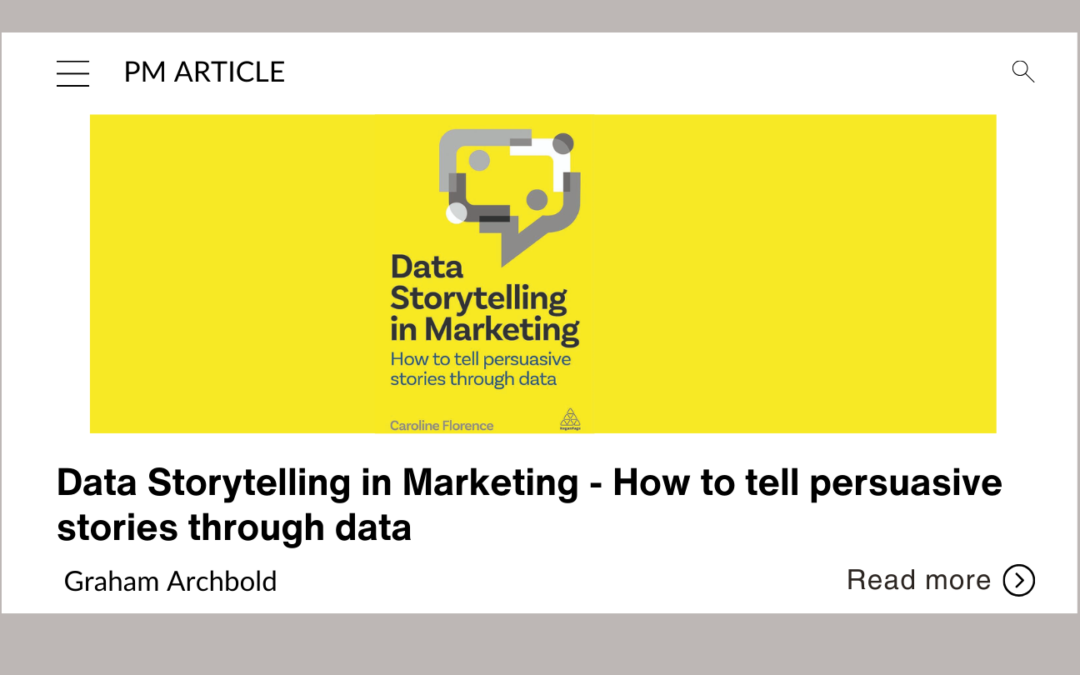By Caroline Florence
Reviewed by Graham Archbold
Published by Kogan Page
£31.99
Imagine telling your board that 33% of clients are ‘somewhat dissatisfied’ with the firm’s service performance based on ratings of availability and responsiveness.
“Meh, so what, we’ve got other priorities.”
But tell them how Maria, a director at your newly onboarded growth client, had sleepless nights last weekend.
All because she couldn’t speak to one of your team on the Friday afternoon about a sudden HR crisis. You might lay it on thick about the emotional distress and her ruined weekend.
Then point out that one in three clients has a similarly visceral example.
The story brings the stats to life and that’s what Data Storytelling in Marketing is all about: how to take people from a position of complacency, apathy or resistance to engagement and willingness to act.



